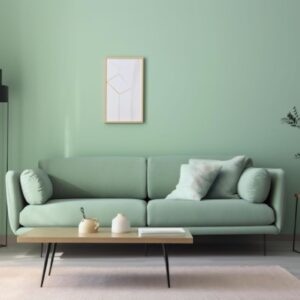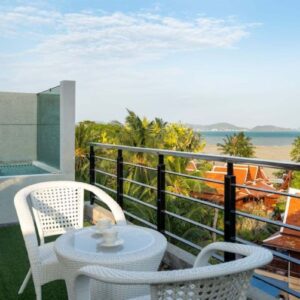Designing a home that seamlessly integrates with the needs and interests of children is an art. In this guide, we will delve into the intricacies of kid-friendly home design, focusing on the creation of spaces that cater to the unique requirements of our little ones. From playrooms to study nooks, discover how to craft environments that foster creativity, learning, and, most importantly, joy.
One of the key elements of a kid-friendly home is a designated play area that sparks creativity and imagination. Create an indoor play zone with colorful rugs, soft cushions, and open shelving for toys. Consider installing a chalkboard or a wall decal that doubles as a drawing space, allowing your children to express their artistic flair.
While the playroom is primarily for your children, integrating style into the space ensures it complements the overall aesthetic of your home. Make sure your furniture is both functional and visually appealing. Opt for storage solutions that keep toys organized yet accessible, such as colorful bins or cubbies. This balance allows the playroom to be a delightful space for children and a seamless extension of your home’s design.
Designate corners or nooks in various rooms for interactive learning. Incorporate bookshelves filled with age-appropriate books, soft seating, and perhaps a small table for drawing or crafting. These designated spaces encourage a love for learning and provide children with cozy areas to explore their interests.
Transform learning into a fun and interactive experience by seamlessly blending educational elements into your home decor. Use wall decals that showcase letters, numbers, or even maps. Incorporate educational tools like magnetic boards or chalkboards where children can practice writing and engage in creative learning activities. This not only enhances their cognitive development but also makes learning an enjoyable part of their daily environment.
In bedrooms, choose furniture that grows with your child. Opt for convertible cribs that can later transform into toddler beds. Consider loft beds or bunk beds with built-in desks or play areas underneath for older children. Investing in furniture that adapts to your child’s changing needs ensures a functional and stylish bedroom for years to come.
Create study spaces that can evolve alongside your child’s education. Adjustable desks and chairs allow for customization as your child grows taller. Ensure ample storage for school supplies and consider using modular shelving or pegboards for easy reorganization. A well-designed study area not only supports academic endeavors but also promotes a sense of responsibility and organization.
Maintaining an organized and clutter-free bedroom is crucial for a child-friendly space. Encourage your child to participate in organizing their toys by using labeled bins or baskets. Consider storage solutions that are easily accessible, promoting independence and responsibility. Teach your child the value of putting toys back in their designated places, creating a sense of order and tidiness.
Storage solutions can be both functional and stylish. Choose furniture pieces that serve dual purposes, such as ottomans or benches with hidden storage compartments. Wall-mounted shelves not only provide additional storage but also serve as decorative elements. When storage solutions seamlessly blend with the overall design of the room, they contribute to a visually appealing and organized space.
Kid-friendly home design doesn’t have to break the bank. Embrace do-it-yourself (DIY) decor projects to add a personal touch to your home without a hefty price tag. Create custom artwork with your child, frame their drawings, or repurpose old furniture with a fresh coat of paint. DIY projects not only save money but also create unique, sentimental pieces that contribute to the overall charm of your kid-friendly space.
When selecting furniture and accessories, look for budget-friendly options that prioritize both style and functionality. Consider shopping at thrift stores or online marketplaces for gently-used items that can be easily refreshed with a coat of paint or new hardware. Mix and match affordable decor pieces to create a curated look that suits your taste without exceeding your budget.
Set aside designated spaces for play to contain the exuberance of young ones. A playroom can be a colorful haven for games and creativity. Consider incorporating soft play mats, wall decals of favorite characters, and storage for toys. For homes with limited space, designate corners or nooks in common areas for spontaneous play.
Creating environments that stimulate learning is key to a kid-friendly home design. Establish study nooks with age-appropriate desks and comfortable chairs. Incorporate educational wall art and interactive learning tools. Ensure that these spaces are well-lit and free from distractions to encourage focus and curiosity.
In crafting a home that seamlessly blends style with kid-friendly functionality, it’s essential to embrace the playful spirit of childhood while maintaining a sense of order. From childproofing to creating designated play zones, every design element contributes to a harmonious living space for the whole family. As you embark on this journey, remember that a well-designed home is one where both parents and children can thrive together. In the subsequent responses, we’ll explore additional aspects and conclude our comprehensive guide to kid-friendly home design.
A: Secure cabinets, cover outlets, and soften sharp corners with childproofing measures for a safe environment.
A: Choose durable, stain-resistant fabrics and easy-to-clean surfaces to withstand the wear and tear of family life.
A: Explore thrift stores, online marketplaces, and DIY projects for affordable yet stylish decor and furnishings.
A: Designate corners or nooks with play mats, wall decals, and smart storage for spontaneous and organized play.
A: Invest in convertible cribs, modular furniture, and adaptable pieces to ensure longevity and practicality as children grow.







